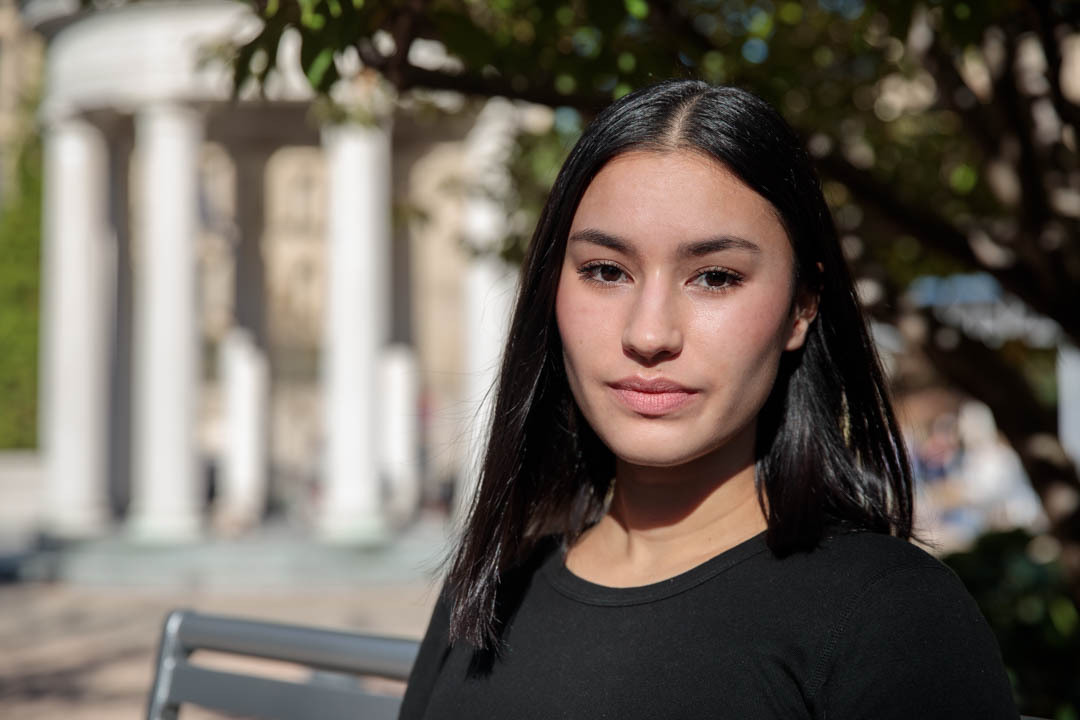By Tatyana Hopkins
Sarala Duckworth, a senior studying international affairs in the Elliott School of International Affairs, spent her summer in Myanmar serving as a research intern in the emergency unit of the United Nations Children’s Fund (UNICEF). While serving in that role, she undertook a gender-based risk assessment of regional vulnerabilities for children due to conflict and natural disasters.
Ms. Duckworth was granted a George Washington University Undergraduate Research Award to pursue this research under Christina Fink, a professor of practice of international affairs.
Read more about Ms. Duckworth’s project:
Q: What question were you trying to answer with your research?
A: Before I arrived in Myanmar, much of the information I came across was outdated or unavailable due to stringent restrictions on information dissemination. So, my initial proposal was to asses childhood risk in instances of flooding in one area, Mon State, which seemed to be particularly high-risk for flooding based on the data I had access to in the United States.
However, once in Myanmar, I consulted with UNICEF staff and management as well as other agencies that had access to unpublished data. The central question of my project was expanded to analyze flooding risk to children in all states. It also expanded to include other risk variables for children in Myanmar, such as hazard risk information, population exposure, climate change vulnerability, socio-economic vulnerability and local capacity to absorb and recover from natural disaster.
Ultimately, I hope the report can serve as an in-depth planning document to support UNICEF’s and other agency’s child-centered work by identifying gaps in their risk and climate-based programming and resource prioritization for girls.
Q: What were the major findings from your research?
A: I am still midway through the mapping process, and I expect to have my final conclusions soon, but I do have some initial insights based on what I have analyzed so far.
From my initial analysis, there is evidence suggesting climate conditions in Myanmar have worsened dramatically since 2017 and that conflict may be intensifying in several areas following the mass exodus of many Rohingya people from Myanmar’s Rakhine state in August 2017. These factors are no doubt affecting girls and women, who are more vulnerable to sexual violence and other risks in these contexts. Conflict-related displacement of girls contributes to increased trafficking, forced labor, sex work and other outcomes.
However, there are serious limitations that hamper our ability to accurately predict conditions for some of the most vulnerable female populations, including the exclusion of Rohingya from the 2014 Myanmar census and large conflict areas outside of Myanmar government control along the Chinese border.
Q: How did you get your findings?
A: My analysis was based on a globally developed UNICEF tool, the Child-Centered Risk Assessment (CCRA), which provides a statistical model for ranking risk for children across all 325 townships using data compiled from 32 indicators. It was previously used in Myanmar studies in 2015 and 2017.
My report built on these two previous reports, specifically on two identified limitations of the 2017 report— lack of attention to female-specific risks and inability to perform comparison of risks by township over time because of different levels of geo-spatial analysis used between previous reports. I segregated indicators of the CCRA model by gender to better understand specific risk factors for girls in every township and incorporated additional indicators that help pinpoint gender-specific risk such as female post-secondary dropout rates and gender-segregated bathroom access. I also consulted with multiple agencies and partner organizations.
Q: How did you become interested in childhood vulnerability and program assessment?
A: I have long been fascinated by the factors that drive educational disparities for girls. This interest brought me to Asia, where in my opinion, some of the most interesting work is being done on the subject.
My family roots in Nepal have also nurtured this interest. My superwoman grandmother dropped out of school when she was in fifth grade to help raise her siblings, and one of the first in-depth research projects I did was interviewing school principals and teachers in Kathmandu about cultural factors that drive female student retention. This was my access point for studying child vulnerability in emergency within the context of Myanmar, which opened me up to developing a broader interest in understanding the full range of specific risk factors that limit girls in many contexts.
Q: Now that your work is complete, what further work do you think needs to be done related to these issues?
A: Part of the need for this report arose from anecdotal evidence of risk affecting children differently based on gender in conflict areas on the higher end of the 2017 CCRA risk index—recruitment of boys for child soldiering and conflict-related displacement of girls contributing to increased trafficking, forced labor and sex work, to give a few examples. However, there is a gap in evidence documenting these cases and differences in risk by gender. For example, the country’s census did not segregate several questions by gender, which limits full understanding of risk factors specifically affecting girls.
UNICEF is working tirelessly on many of the key issues my study raises such as the urgent need to mitigate gender-based violence, increase access to sexual and reproductive health care and raise educational retention rates for girls. I'm encouraged by the incredible strides they and others have made as recently as this summer, with a new Child Rights Law, which creates a minimum working age and prohibits all forms of violence against children. I'm really grateful to have been a part of their work in some small way.





